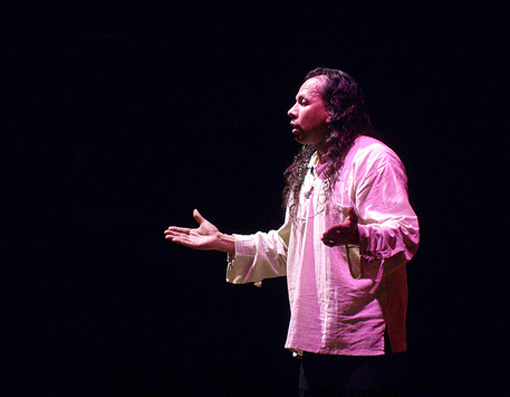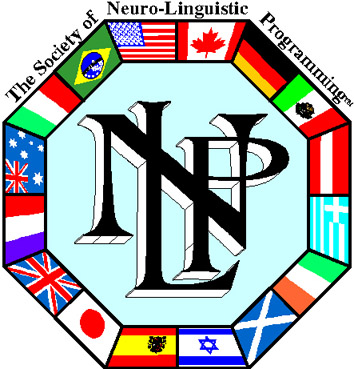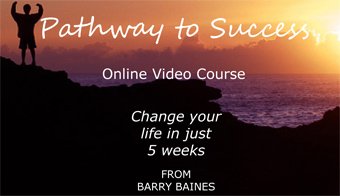Body language of a liar
NLP techniques
What is the body language of a liar? Are there reliable physiological signs that let you know instantly that the person in front of you is lying?

The essence of lying is in deception, not in words.
John Ruskin
Is it a reliable indicator?
We have all had our own encounters with liars at some time in our lives, and some of us think we know how to detect them.
But, be honest with yourself: at some time in the past you have been legged over by someone you thought was truthful when, in reality, he was a liar and a conman.
In the courts juries are told to listen to the evidence and examine the demeanour of witnesses.
Incongruencies in the body language of a liar
Sometimes there is a lack of congruence between what a witness says and the way he acts.
So often a witness is broken down in cross-examination by inconsistencies in what he says now with what he has said in the past.
What a witness, especially a defendant, says at the time is more often likely to represent the truth.
Given the chance to think about it, however, the witness thinks that version may be improved upon to bolster his own case and changes it at trial.
So reference to what he said earlier is a vital factor in exposing his truthfulness or lack of it.
The body language of a liar - the eyes
How often have you heard people say – perhaps you have even said it yourself – that they can tell somebody is lying by the look in his eyes.
What I see in the supposed liar’s eyes, of course, may be entirely different from what you are seeing.
In their early work, Frogs into Princes, Richard Bandler and John Grinder, explained how eye accessing cues may be used to indicate what might be going on in a person’s mind.
People vary slightly depending primarily on whether they are right or left handed, but there may be other idiosyncratic differences.
In any event, they can be detected with a few trial observations and questions.
If you ask a right handed person to recall, say, the colour of the wallpaper in his home, his eyes will tend to go up and to the right as you look at him.
That is the usual automatic direction for visual recall.
If, however, you ask him to envisage something he hasn’t seen before, like how would your daughter look with pink and white striped hair and a ring through her nose, he would have to construct the image mentally and his yes will tend to go up and to the left.
Kinaesthetic feelings are down to the left and internal dialogue down to the right.
Generally speaking, with left-handed people it is the opposite way round and, as I said before, some people don’t fit solidly into one category or the other.
You will have to elicit the pattern with your test questions.

The body language of a liar - test eye accessing cues for yourself
Psychologists, as a body, tend to dispute the accuracy of eye accessing questions and the automatic responses.
They believe there is a lack of scientific data to support the theory.
You may think, however, that there is nothing particularly scientific about psychology in any event; it is all trial and error.
Test it for yourself. Read the article about eye accessing cues on this website and try it on friends, and when you have mastered it try it in other situations.
It seems to me that eye movements are not something people can control in the ordinary way and that they are good indicators.
What I would say, however, is don’t rely on these cues alone. Use them as part of the overall message you are getting from the general body language.
Body language, on the whole, is insufficient to determine of itself that a person is lying.
What it may indicate, though, is a lack of confidence and that may be enough to put you on the right track.
Lack of confidence in the body language of a liar
When I cross-examined defendants, I was encouraged at times when they answered with a palms-up gesture from both hands indicating that they wished to be believed.
Whilst in itself it may not appear to be so bad, it indicated at the same time a lack of confidence, a lack of belief in the witness’s own words.
I would have expected an innocent person to gesturing in a more affirmative palms-down position.
Shrugging the shoulders isn’t the sort of response one would expect either from the not guilty defendant. If you are innocent you are passionate about it.
If you are guilty, but trying to get off, shrugging of the shoulders appears as a couldn’t-care-less or hopeless gesture.
It certainly displays a lack of commitment to the witness’s own evidence.
Watch carefully when your questions are being answered for consistency and congruency in the body language.

The incongruence of the body language of a liar
You will be surprised on occasions to see someone denying a particular fact but at the same time giving a slight nod.
When they realise what they are doing, they may endeavour to correct the situation, but the first sign is the telling one.
This is the behaviour of the would-be deceiver!
Consistency and congruency applies to actions generally as well as to specific body language.
We expect people to act in accordance with the apparent seriousness or urgency of a situation.
If a young woman has been seriously sexually assaulted, we wouldn’t in the normal course of events expect her to wait several weeks before reporting the incident.
Sometimes it is alleged during the course of a trial that such a complainant has made up or embellished her story at trial.
Body language of a liar - evidence of recent complaint in cases of sexual assault
That is why there is a rule which permits evidence of the complaint being made at the time.
That sort of evidence may normally be regarded as hearsay but it is admitted to show, for example, that the girl told her mother within hours that she had been raped.
The mother is then able to give evidence of that, not to demonstrate that the rape took place – because the mother was not there to witness it – but to show that is the complaint the girl was making at a very early stage.
Evidence of that sort of congruent behaviour may be of great assistance to a jury in determining the truth of the allegations.
You may have concluded by this stage, that identifying a liar with certainty from body language alone is a near impossibility.
Body language is useful. It may show a lack of confidence.
It may indicate that a witness is probably telling the truth or probably lying.
That may be enough to lead you in the direction you wish to go, and may help you to ascertain the truth ultimately. But on its own it will not be enough.
Gain FREE access to my self-confidence video
To gain free access to my self-confidence video enter your email address and first name in the box below. This will also keep you up-to-date with my free newsletter Inspirations.
As a bonus for subscribing you'll receive the first three chapters of my book Towards Success, where you can learn more about NLP techniques, from Anchors to Modelling, and my 50 favourite inspirational quotations.
Return from Body language of a liar to
The Secret of Mindpower & NLP Home
Return to Site Search & Contents Page

Change your life in just 5 weeks
Discover the pathway to success with my online video course. Learn more

Download NEW ebook Your Genius Within and find out how to uncover your own inner genius

NLP Articles
- Anchors
- Anchors explained
- Anger Management tips
- Anxiety Panic Attacks
- Beating disappointment
- Beating drug addiction
- Best self-help book
- Big events
- Body control module
- Body language attraction
- Body language flirting
- Body language in communication
- Body language interpretation
- Body language of a liar
- Body language signs
- Boost self-confidence
- Building Rapport
- Changing bad habits
- Changing beliefs
- Changing States
- Children
- Christmas (Holidays)
- Christmas & New Year greetings
- Chronic pain management
- Conquering Fear
- Crohn's Disease
- Cure for a Phobia
- Deal with your fear
- Deletion
- Determining your destiny
- Developing your senses
- Disaster to Triumph
- Distortion
- Drawing the line
- Embedded Commands
- Enthusiasm
- Exams
- Expecting the Best
- Expert Relationship Advice
- Eye accessing cues
- Fear of driving
- Fear of elevators
- Fear of flying
- Fear of the dentist
- Fear of vomiting
- Fear, Mental Blocks & Hesitation
- Fear, Uncertainty and Doubt
- Fight or flight response
- Finding Solutions
- Forever Worried?
- Friendly persuasion
- Generalisation
- Get the life you want
- Getting lucky
- Getting over your past
- Goal Setting Tips
- Goal Setting Tools
- Goal Setting Tools, More
- Great self-help books
- Grief
- Happy retirement
- Healthy Mind
- High blood pressure
- How long will I live?
- How to be lucky
- How to read body language
- Hypnosis & NLP
- Hypochondria
- Imagining perfect performance
- Improving speed reading
- Instant Mood Lift
- Interviews
- Knowing yourself
- Learn NLP
- Life Values
- Maintaining weight loss
- Make you thin
- Making it happen
- Managing change
- Meddling Mom
- Meeting People
- Mental rehearsal techniques
- Meta Model
- Metaphor
- Modelling
- Modelling Genius
- More NLP techniques for weight loss
- NLP Books
- NLP Courses
- NLP Practitioner Course
- NLP Master Practitioner Course
- NLP Secret
- NLP jargon buster
- NLP Modelling helped me
- OCD symptoms
- OCD treatment
- Overcoming low self-esteem
- Overcoming stage fright
- Pacing & Leading
- Persuasion
- Presuppositions
- Presuppositions (2)
- Problem solving
- Public Speaking
- Reaching agreement
- Reframing
- Self-confidence
- Self limiting beliefs
- Self-image
- Sportsmen Guide
- Stage fright tips
- Stammering
- States
- Stop binge eating
- Stop Smoking
- Subliminal Persuasion
- Success Principles
- Techniques for persuasion
- Techniques for weight loss
- The meaning of NLP
- Time & NLP
- Towards
- Towards & Away
- Ulcerative colitis
- Weight Loss
- Weight loss techniques
Articles on HYPNOSIS:
- Big events
- Conversational Hypnosis
- Covert hypnosis
- Deepening self-hypnosis
- Depression Hypnosis
- Handshake interrupt
- How to do self-hypnosis
- How to hypnotise your audience
- Hypnosis and Weight Loss
- Hypnosis NLP
- Hypnosis: Right or Wrong
- Hypnosis Stories
- Hypnotic language
- Hypnotism Stories
- Hypnosis story for you
- Hypnosis to quit smoking
- Instant self-hypnosis (age regression)
- Practical self-hypnosis
- Self-Hypnosis
- The Milton Model
Articles about THE SECRET of:
- Abundance Mentality
- Achieving more
- Beating Domestic Violence
- Being bothered
- Being Happy
- Best Self-help Book
- Conquering road rage
- Coping with criticism
- Dealing with pride
- Defeating stress
- Discover the secret of wealth
- Genius
- Getting off to sleep
- Getting over a break up
- Getting over your temper tantrum
- Health
- How to deal with grief
- Imagination
- Influence
- Love
- Making Money
- Managing others
- Memorising a Deck of Cards
- Memory
- My Success
- Organising Memory
- Overcoming tiredness
- Overcoming worry
- Perpetual energy
- Remembering
- Secret Law of Attraction books
- Sleeping well
- Speed Reading
- Super Memory
- Surviving a recession
- Surviving negativity
- The Secret Law of Attraction
- Towards
- Teachers of the Secret
- Waiting for God
- Wealth Building
- Weight Loss
Articles about COACHING:
- Barriers to effective communication
- Communication
- Executive Business Coaching
- Feedback
- Free interview tips
- Free Life Coaching
- Goal Setting Tips
- Goal Setting Tools
- Goal Setting Tools, More
- Life & Executive Coaching
- Personal Development Plan
- Problem solving
- Success Principles
- The Secret of my Success
- Time Management
Articles on GENIUS and MIND POWERS:
- Activating genius
- Become a genius
- How long will I live?
- Mind Powers
- Misty Reflections
- Modelling Genius
- The Secret of Genius
Articles about MEMORY:
Articles about RELATIONSHIPS:
- Beating domestic violence
- Body language flirting
- Expert relationship advice
- Healthy family relationships
- Hurt feelings
- Love
- Relationship problem advice
- Signs of true love
- The secret of getting over a break up
Articles on WEIGHT LOSS:
- Best Weight Loss Plan
- Body control module
- Easy weight loss
- Hypnosis and Weight Loss
- Maintaining weight loss
- More NLP techniques for weight loss
- NLP techniques for weight loss
- NLP techniques to make you Thin
- NLP weight loss techniques
- Stop binge eating
- The Secret of weight loss
- Weight control help
- Weight loss tips
- Why have I lost weight?
Articles on WEALTH:
Articles on SECRET and INSPIRATIONAL TEACHERS:
- Bill Harris
- Bob Proctor
- Dr John F DeMartini
- Hale Dwoskin
- Jack Canfield
- Joe Vitale
- John Assaraf
- Lisa Nicholls
- Michael Bernard Beckwith
- Stephen R Covey
Real Women of Genius Articles:
Real Men of Genius Articles:
- Abraham Lincoln
- Albert Einstein
- Antoni Gaudi
- Carl Jung
- Charles Darwin
- Charles Dickens
- Christopher Wren
- Confucius
- George Washington
- Hannibal
- Horatio Nelson
- Isaac Newton
- Julius Caesar
- Lawrence of Arabia
- Leonardo da Vinci
- Michelangelo
- Mohatma Gandhi
- Napoleon Bonaparte
- Nicolas Copernicus
- Oscar Wilde
- Rembrandt
- Robert Burns
- R L Stevenson
- Socrates
- Walt Disney
- William Shakespeare
- Wolfgang Amadeus Mozart








New! Comments
Have your say about what you just read! Leave me a comment in the box below.